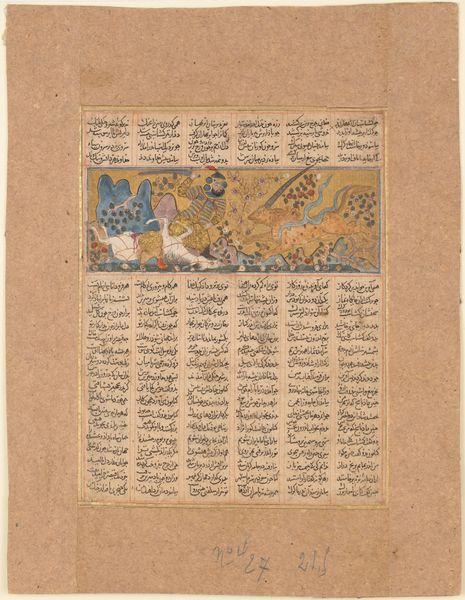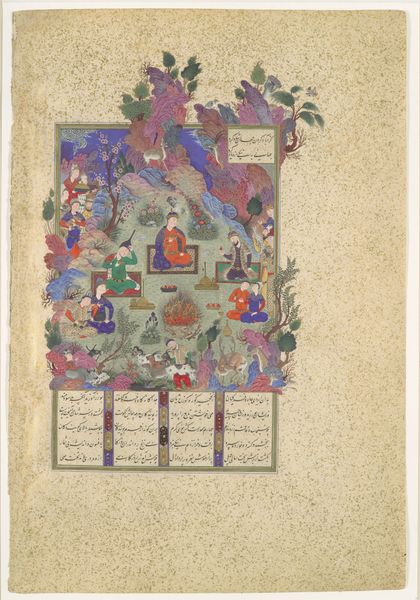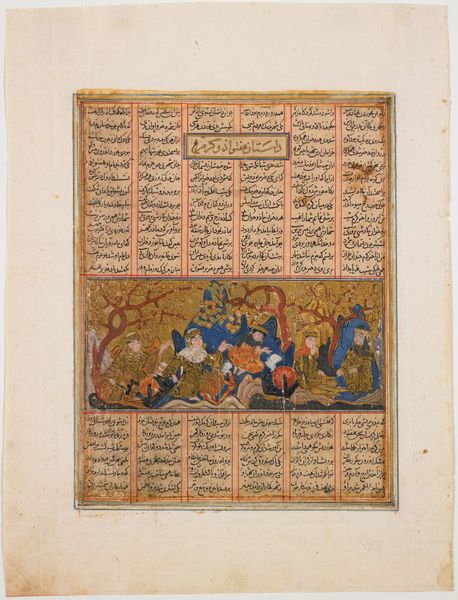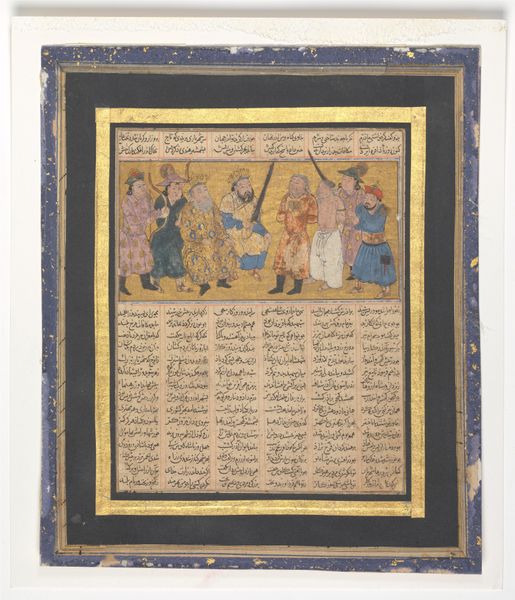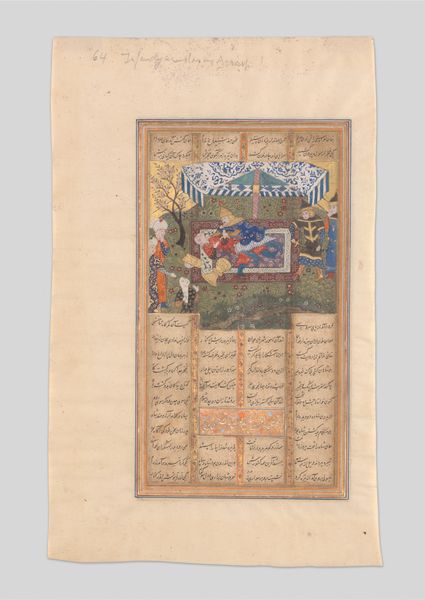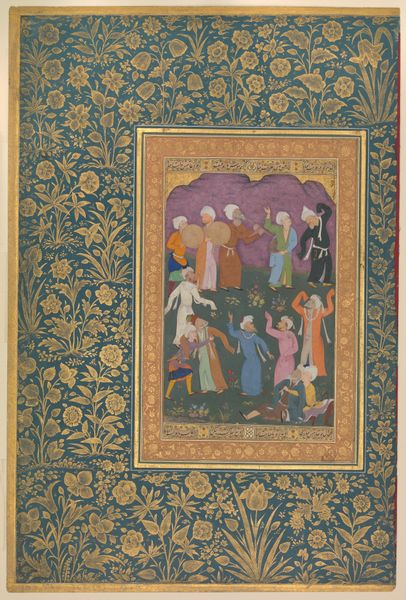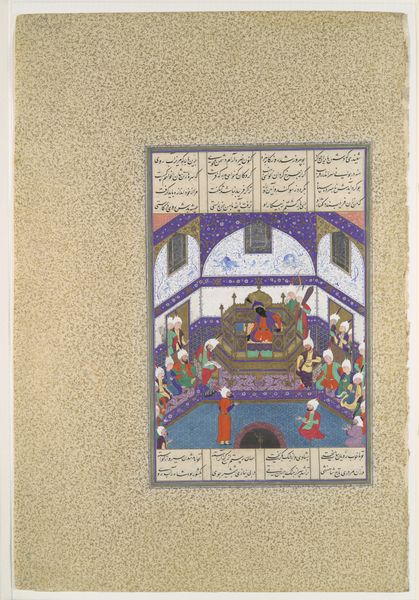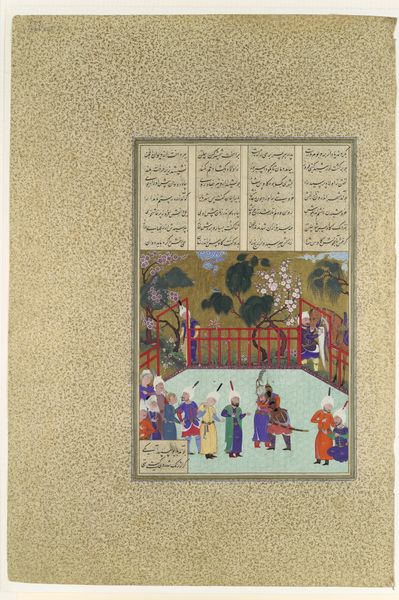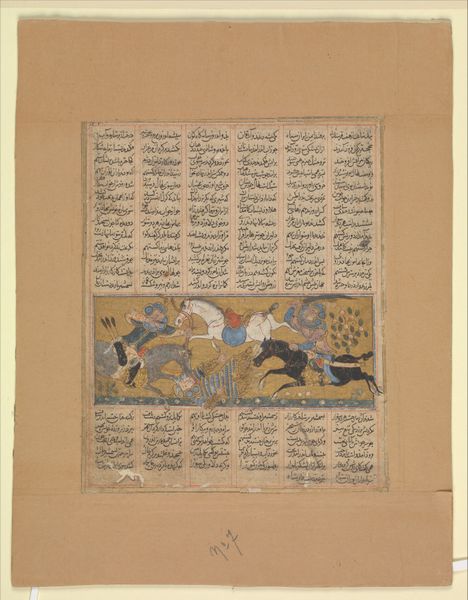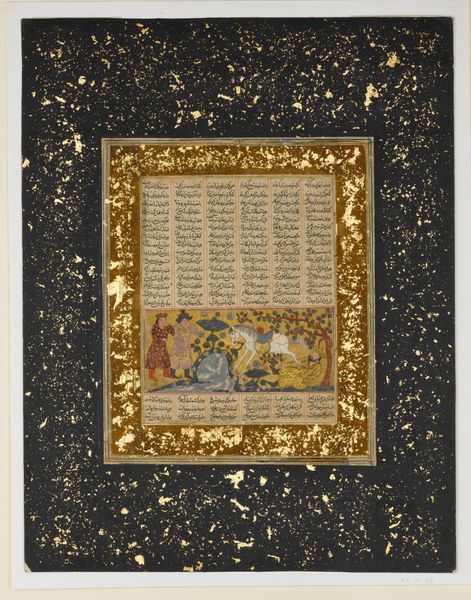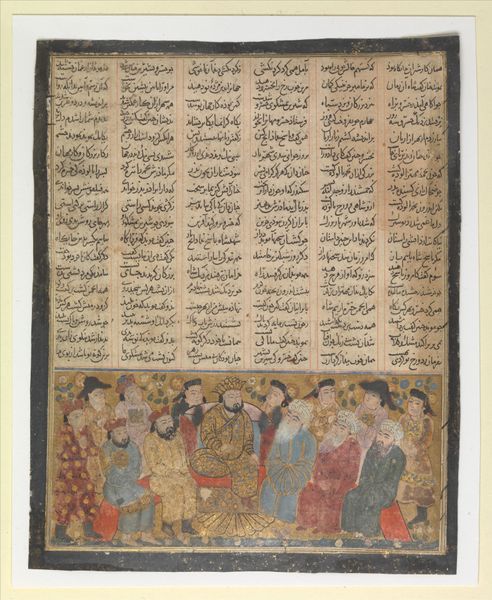
"Bahram Gur Entertained by the Daughters of Barzin", Folio from a Shahnama (Book of Kings) 1275 - 1355
0:00
0:00
tempera, painting, paper
#
narrative-art
#
tempera
#
painting
#
figuration
#
paper
#
islamic-art
#
miniature
Dimensions: Text block: H. 6 3/16 in. (15.7 cm) W. 4 13/16 in. (12.2 cm) Painting: H. 2 3/8 in. (6 cm) W. 4 3/4 in. (12.1 cm)
Copyright: Public Domain
Curator: Let’s explore this fascinating page from a Shahnama, or Book of Kings, titled "Bahram Gur Entertained by the Daughters of Barzin." It's believed to have been created sometime between 1275 and 1355. We can view it now at the Metropolitan Museum of Art. Editor: My immediate reaction is that the piece exudes tranquility and a luxurious sense of leisure. The intricate patterns and colors, from the figures' clothing to the vibrant vegetation, invite close looking and a dreamy sort of immersion. Curator: Precisely. We need to remember the importance of the Shahnama as more than just an epic poem; it's a record of Persian cultural identity. This folio depicts Bahram Gur, a celebrated Sasanian king known for his bravery and romances, in a moment of peaceful indulgence. Placing the narrative within the socio-political framework reveals the complexities of kingship and representation of power during the Ilkhanate period. Editor: I appreciate you noting that connection between leisure and power. Look closely, and we notice a distinct stylistic blend. The Persian miniature tradition mixes here with influences perhaps gleaned from contact with the Mongol Ilkhanate. The faces seem somewhat flattened, but the detailed ornamentation remains exquisitely Persian. This amalgamation tells a complex story about intercultural exchange and the negotiation of identities within a historically specific context. Do you find a kind of tension between serenity and this undercurrent of socio-political complexity? Curator: Definitely. We often find in such courtly depictions an intentional obscuring of complex political dynamics. To simply read this scene at face value as courtly enjoyment is insufficient. The placement of Bahram Gur, the subtle power dynamics conveyed through posture and gaze – all contribute to a more nuanced understanding. It makes us think about gender roles in courtly life, and the ways in which these roles can be both empowering and confining. These ‘daughters’ entertaining a powerful king could signify allegiance but are simultaneously being placed in a situation of servitude. Editor: Well, it’s striking to see such complex commentary housed within an object designed seemingly for visual delight. It speaks volumes about the layered realities inherent in cultural production of the era. Curator: Agreed. Exploring its themes and artistry has provided richer perspectives, allowing us to view the artwork as a valuable lens through which we perceive not only art but society itself.
Comments
No comments
Be the first to comment and join the conversation on the ultimate creative platform.
